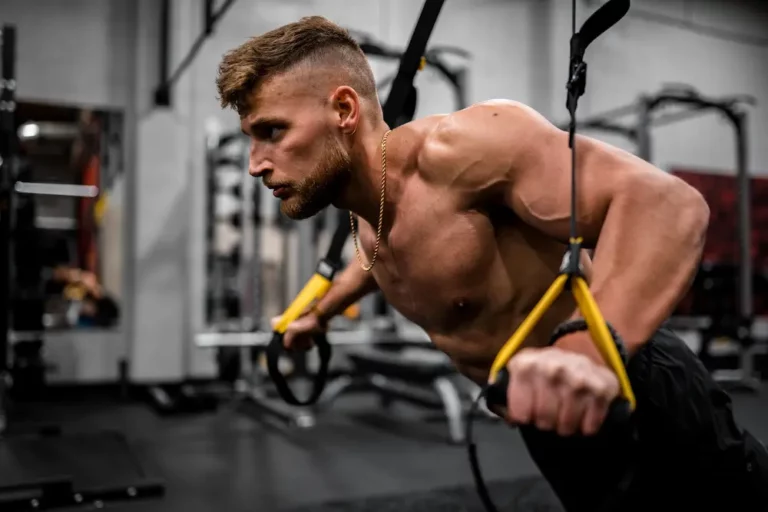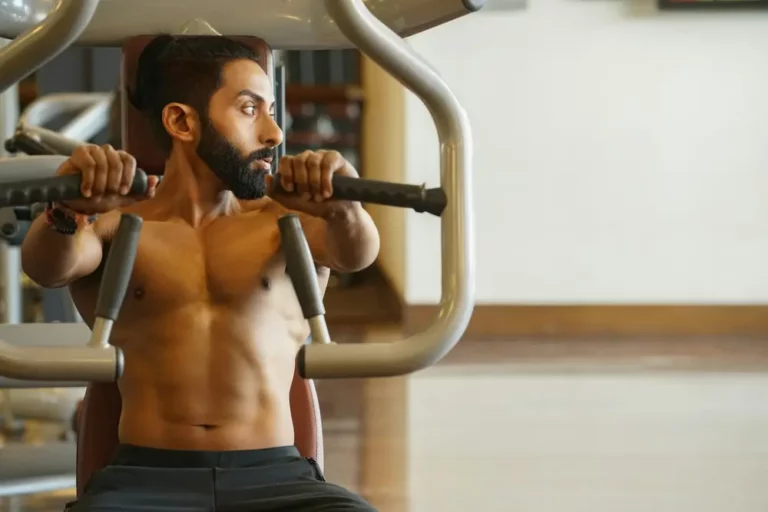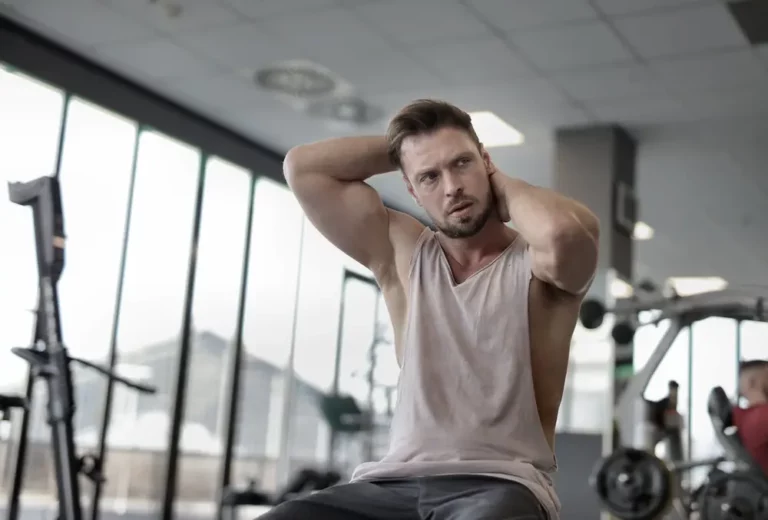Maximize Bench Press Gains: Key Muscles & Optimization Tips
When I first started hitting the gym, the bench press quickly became my go-to for feeling like I was truly getting stronger. But what muscles are we really working during this popular exercise? It’s not just about pushing weights up and feeling good; there’s a whole science behind which muscles get fired up during a bench press.
Understanding the muscles involved not only boosts our workout efficiency but also helps in preventing injuries. Whether you’re a gym newbie or a seasoned lifter, knowing what’s happening beneath the surface can transform your approach to bench pressing. So, let’s dive into the anatomy of this all-star exercise and see what muscles are doing the heavy lifting.
Primary Muscles Involved in Bench Press
When I’m pushing through a bench press workout, I’m not just going through the motions. I’m keenly aware of the muscle groups that come into play. Let’s dive into the primary muscles that the bench press targets.
Pectoral Muscles
At the top of the list are the pectoral muscles, or pecs for short. These muscles are the stars of the bench press show. When I lower the bar to my chest, that’s the eccentric phase, and it’s where the Pectoralis Major gets a serious stretch. Then, during the lift’s concentric phase, as I push the bar away from my chest, that’s when the pecs contract powerfully. The chest muscles, particularly the Pectoralis Major, are not only responsible for giving the chest its size and shape but also play a pivotal role in the movement by bringing the upper arm across the body. This action is crucial, whether I’m doing a flat bench press or an incline one, to target different areas of my chest more specifically.
Triceps
Next up are the triceps. These muscles might be tagged as secondary movers in the bench press, but believe me, they’re pulling serious weight in the exercise. The Triceps Brachii, with its three heads, comes into play primarily during the lockout phase of the press. This is when the arm extends, and the bar is pushed fully away from the chest. It’s fascinating to note that the long head of the tricep also aids in stabilizing the shoulder joint throughout the movement, adding an extra layer of involvement and benefit from the exercise. For anyone looking to beef up their arms, paying attention to the triceps engagement during the bench press is a game-changer.
Anterior Deltoids
Last but certainly not least are the anterior deltoids. These front shoulder muscles work in tandem with the pecs, especially during the initial phase of the lift as I start pushing the bar up. Their main job is to assist in shoulder flexion, which is a fancy way of saying they help raise my arms in front of my body. This involvement of the anterior deltoids adds a layer of complexity to the bench press, transforming it from a mere chest exercise into a comprehensive upper-body workout.
By focusing on proper form and being mindful of the roles these muscles play, I’ve found that I can not only enhance the effectiveness of my bench press workouts but also minimize the risk of injury. Emphasizing the concerted effort of the Pectoral Muscles, Triceps, and Anterior Deltoids has been key in my journey to building a stronger, more balanced upper body.
Secondary Muscles Supporting the Bench Press
When I talk about bench pressing, it’s easy to focus only on the primary muscles like the pec major, but I’d be missing a big part of the story. The reality is there’s a whole team of secondary muscles playing crucial roles in this exercise.
Synergistic Muscles
First up are the synergistic muscles. These guys work together with the main muscles to produce a smoother, more effective movement. In the bench press, the anterior deltoids and triceps are the stars of the synergy show. They’re not just along for the ride; they significantly contribute to the pushing phase of the lift. Think of them as the best supporting actors in a blockbuster movie. They enhance the performance of the lead actor, our pec major, making sure that every push is strong and every lift is powerful.
Stabilizing Muscles
Next, let’s talk about the stabilizing muscles. These are the unsung heroes who work behind the scenes, ensuring everything goes according to plan. They include muscles like the serratus anterior, the lats (latissimus dorsi), the rotator cuff muscles (infraspinatus, supraspinatus, subscapularis, and teres minor), and various parts of the core, like the transverse abdominis and obliques.
The role of stabilizers in the bench press cannot be overstated. They help to maintain a proper form, prevent injuries by protecting the joints, and even impact the effectiveness of the exercise by aiding in the efficient transfer of power from the primary movers to the bar. Imagine them as the technical crew in a theater production, controlling the lights, the sound, and the safety equipment. Without their precise work, the show wouldn’t go on as smoothly or safely.
Understanding Muscle Activation During Bench Press
As we dive deeper into the nuances of the bench press, it’s fascinating to observe how various muscle groups activate during different phases of this popular exercise. I’ve discovered that getting a grip (quite literally) on how your muscles engage can make a significant difference in your training outcomes.
Muscle Groups in Different Phases
During the bench press, the body is anything but static. Different muscles spring into action at various points to execute the lift effectively. In the descending phase, when you’re lowering the bar toward your chest, it’s not just about gravity doing its work. Your pectoralis major, deltoids, and triceps are under tension, controlling the movement to prepare for the powerful push back up.
Once you hit the bottom of the lift, there’s a brief moment where everything tightens. Here, your pectoralis major muscles are stretched and ready to contract while your triceps and anterior deltoids position themselves for the push phase.
The ascending phase, or the pushback to the start position, is where the action heats up. Your chest muscles forcefully contract, your triceps extend the elbow, and your deltoids add that extra oomph to drive the bar up. It’s a full upper-body effort that highlights how interconnected muscle groups are during compound exercises like the bench press.
The Role of Grip Width
I’ve found that grip width plays a pivotal role in adjusting the dynamics and focus of muscle activation during the bench press. A wider grip reduces the range of motion and aligns the elbows more directly under the bar. This positioning activates the chest muscles more intensively while taking some load off the shoulders and triceps.
Conversely, a narrower grip brings your elbows forward, shifting the emphasis towards the upper chest, shoulders, and triceps. This grip demands more from your triceps as your elbows move through a full extension, which is a key phase powered by these muscles.
Understanding these nuances has led me to experiment with different grips based on my training goals. For instance, if I’m aiming to bolster my chest muscles, I’ll lean towards a moderate-to-wide grip. But if my focus is on strengthening my triceps or targeting my shoulders more, I might adopt a narrower grip for certain workouts.
Experimenting with grip widths has not only spiced up my bench press routine but also helped me achieve more balanced muscular development. It’s a reminder of how small tweaks in your approach can lead to noticeable changes in your fitness journey.
Variations of Bench Press and Muscle Engagement
When it comes to bench pressing, I’ve always been fascinated by how slight modifications can dramatically alter the focus and engagement of different muscle groups. Let’s delve into some of the variations, like incline vs. decline and barbell vs. dumbbell presses, to see how they stack up.
Incline vs. Decline Bench Press
Starting with the incline bench press, I’ve noticed a significant emphasis on the upper pectoral muscles. This shouldn’t come as a surprise since the angle of the incline bench tilts your body backward, shifting the strain from your whole chest to primarily target the upper chest and shoulders. It’s a fantastic way to sculpt the top part of the pecs, giving them that full, rounded look.
On the other hand, the decline bench press puts more focus on the lower chest muscles. Though it’s often debated in the fitness community, my experience aligns with the notion that the decline angle offers a unique stimulus to the lower pecs that can’t be exactly replicated by other exercises. Despite its benefits, I always advise caution due to the increased risk of injury and the need for a spotter or safety racks, especially considering the compromised position your body is in.
I’ve found that both variations are invaluable for developing a well-rounded chest, but depending on your goals, you might lean towards one more than the other. For those looking to enhance the upper chest, incline presses are indispensable. Conversely, if you’re aiming to strengthen the lower chest, incorporating decline presses, albeit carefully, could be beneficial.
Barbell vs. Dumbbell Press
The debate between barbell and dumbbell presses is as old as time. Each offers unique benefits that can’t be overlooked. When I bench press with a barbell, I’m able to load more weight, which is essential for overall muscle growth and strength gains. The barbell bench press is a stalwart for developing pressing power and pectoral mass due to the heavier loads one can manage.
Switching to dumbbells, I’ve discovered a whole new world of muscle engagement. Dumbbells require each arm to work independently, promoting muscle balance and unilateral strength. The increased range of motion they allow for is a game-changer, enabling a deeper stretch at the bottom and a full contraction at the top of the press. This added range of motion and independence of movement culminates in enhanced activation of the pectoral muscles, even if the total weight is often less than what can be achieved with a barbell.
Common Mistakes and Muscle Imbalances
When diving deep into the bench press, it’s apparent that this exercise isn’t just about lifting as heavy as possible. It’s also crucial to consider how we lift. I’ve learned firsthand that focusing too much on certain muscles while neglecting others can lead to significant imbalances. These imbalances not only hinder progress but can also set the stage for injuries. Let’s explore these common pitfalls and how to correct them.
Overemphasis on Certain Muscles
I can’t stress enough how common it is for lifters, including myself at one point, to overemphasize the pectoralis major while neglecting the anterior deltoids and triceps brachii. This imbalance arises because the chest muscles are the primary movers in a bench press. However, when the anterior deltoids and triceps aren’t properly engaged or strengthened, it puts us at a higher risk for shoulder injuries and diminishes our overall pushing power.
Moreover, fatigue during later sets can cause an overreliance on the stronger muscle groups. For me, this meant my anterior deltoids were taking over the movement, increasing the risk of shoulder impingement. Keeping the shoulder blades retracted and depressed throughout the lift is a technique I had to master to maintain tension in the chest rather than letting my front delts dominate.
Correcting Imbalances
Realizing that my bench pressing technique wasn’t perfect was humbling. To correct my muscle imbalances, I turned to a variety of strategies. First, incorporating unilateral exercises, like the dumbbell bench press, became integral to my routine. These exercises allowed me to identify and strengthen the weaker side of my body by isolating each side during the lift.
Second, I began to focus more on my breathing technique and the eccentric phase of the bench press, ensuring I took about 3 seconds to lower the bar to my chest. This not only improved my control but also enhanced the engagement of my triceps and anterior deltoids.
Lastly, I integrated assistance exercises targeting my triceps and deltoids into my workouts. Exercises such as overhead presses and triceps dips helped me develop these muscles, creating a more balanced and powerful upper body.
By addressing these imbalances, I not only improved my bench press performance but also reduced my injury risk significantly. It taught me that bench pressing is as much about technique and balance as it is about strength.
Injury Prevention and Muscle Care
In this part of our journey to understand the bench press better, let’s dive into injury prevention and how to best care for our muscles during this demanding exercise. When lifting heavy, it’s not only about the gains but also about ensuring we do it safely and sustainably.
Warm-Up and Cool-Down
I cannot stress enough how vital a proper warm-up is before hitting the bench. It’s something I’ve learned the hard way. Warming up not only prepares my muscles for the upcoming stress but also significantly reduces my risk of injury. I like to start with dynamic stretches that mimic the bench press movement to get blood flowing to my chest, shoulders, and arms. Incorporating mobility exercises, especially for the shoulders, further enhances my range of motion, making me ready for the weights.
Cooling down is equally crucial, though I admit there were times I skipped it and regretted it later. A good cool-down routine helps in gradually lowering my heart rate and begins the recovery process for my muscles. I focus on static stretches post-workout to help alleviate any immediate muscle tightness and to signal my body that it’s time to start repairing itself.
Addressing Muscle Strain and Recovery
Muscle strain can sneak up on you, especially when you’re constantly pushing your limits. It’s important to listen to my body and recognize the difference between muscle fatigue and actual strain. When I’ve gone a bit too hard, I’ve found that rest is my best friend. It’s tempting to keep pushing through the pain, but giving my muscles time to recover is essential for long-term progress.
Recovery isn’t just about resting, though. I’ve incorporated several practices into my routine to aid in muscle recovery. Adequate hydration and nutrition play a big role, especially protein intake, in repairing and building muscle. I’ve also found that gentle massage and using foam rollers can alleviate muscle tightness. For instances of more significant strain, I don’t hesitate to seek professional advice, whether it’s consulting with a physical therapist or ensuring my lifting technique doesn’t put unnecessary stress on my muscles.
Incorporating these practices into my bench press routine has not only improved my performance but has also significantly decreased my recovery time and incidence of injury. It’s a reminder that taking care of my muscles is just as important as the workout itself.
Conclusion
I’ve walked you through the ins and outs of the muscles used in bench pressing, from the basics to the more advanced techniques for maximizing muscle development. Remember, it’s not just about pushing weight; it’s about doing it with the right technique, focusing on the eccentric phase, and understanding the importance of progressive overload and periodization. Don’t forget the role of assistance exercises in strengthening both primary and secondary muscles and the critical aspect of injury prevention and muscle care. By paying attention to these aspects, you’re not just working towards better bench press performance but also ensuring a healthier, more resilient body. Here’s to lifting smarter and growing stronger!
FAQ – Frequently Asked Questions
Can adjusting the angle of the bench press change the muscle focus?
Absolutely. Adjusting the bench to an incline shifts more focus to the upper chest and shoulders, while a decline position targets the lower chest more.
Can bench press help in developing shoulder muscles?
Yes, the bench press can help develop shoulder muscles, particularly the anterior deltoids, though it should be complemented with specific shoulder exercises for balanced development.







